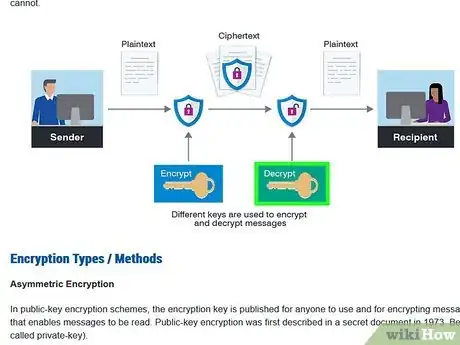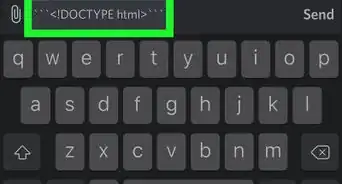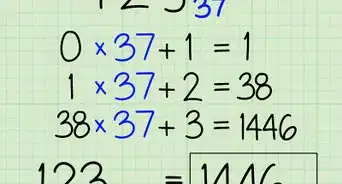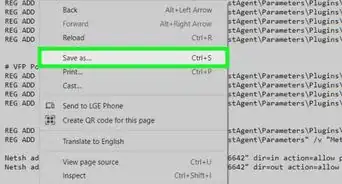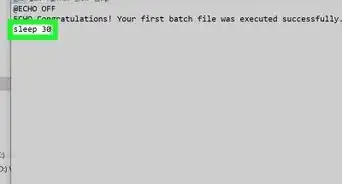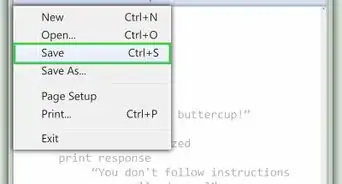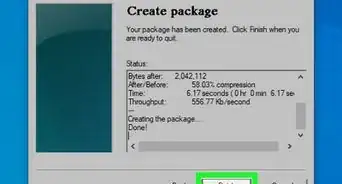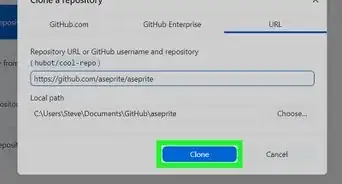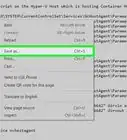X
wikiHow is a “wiki,” similar to Wikipedia, which means that many of our articles are co-written by multiple authors. To create this article, volunteer authors worked to edit and improve it over time.
This article has been viewed 79,310 times.
Learn more...
Whatever your reason is for wanting to create an encryption program, creating one can be fun and very challenging. However, it might be tough to figure out how you do it if it is your first time. This article covers the general idea and the basic steps you'll need to take in order to create a functional and realistic encryption program.
Steps
Part 1
Part 1 of 2:
Creating the Encryption Method
-
1Design the algorithm. A general algorithm is the backbone of all encryption methods. RSA uses mathematical properties of large prime numbers to quickly and safely encrypt private data. Bitcoin uses a version of RSA to safely secure payments and ensure that the sender actually wants to send bitcoins to another user. You should do research on various types of encryption algorithms, like private and public key encryption. It should be noted that no encryption, if you plan on retrieving the data, is unbreakable. Encryption can only discourage casual snooping, and delay serious attacks. It is recommended that you learn what binary is, it will make creating your algorithm much easier and more relevant to data encryption.
-
2Test your algorithm. Once you think you've got a good algorithm, you should try encrypting a very short message by hand. This should take more than a few minutes for good encryption algorithms. A good rule of thumb is that, if you can encrypt the message in your head, then it is not safe for serious encryption. If the final message looks similar, in any way, to the original message, then it might not be safe.Advertisement
-
3Consider decryption. There needs to be a way for authorized parties to access data encrypted by your algorithm. You should make sure that you can easily decode the data if you know the key, and make it hard for attackers to accidentally stumble upon the key through trial and error.
- If you do not want the data to be retrievable at all, consider creating a hashing algorithm instead. A hashing algorithm takes an input and creates a one-way value based on this input. It's possible to go from source input to a hashed value, but it is ideally impossible to go back to the source input from the hashed value. This is particularly viable for password protection. When you create an account on a website with a password, ethical websites will hash your password before storing it. This has many benefits, such as delaying attackers from cracking your password. However, if you forget the password, you'll be forced to create a new one.
-
4Draft the pseudocode. This should be relatively easy once you have your algorithm created and tested to prove that it works. The pseudocode should read like simple and instructive English, being readable enough for a normal person to understand, and instructive enough for a programmer to easily implement the algorithm into a language like C, Java, etc.
Advertisement
Part 2
Part 2 of 2:
Publish the Algorithm
-
1Share your algorithm with other data encryption enthusiasts. This will allow you to discover possible trapdoors in your encryption, and get feedback on the security and viability of the algorithm. If your algorithm is so complex that no one can understand it, then no one will use it. But the same goes for if the algorithm is so easy that anyone can decode a message with minimal effort.
-
2Post a challenge on a forum. There are forums dedicated to solving and decoding data, try publishing a short message you encrypted along with hints about the algorithm used. If you're feeling confident, you can even give them your algorithm and see how long it takes for others to crack it through brute force.
Advertisement
Community Q&A
-
QuestionIs there a software that specifically encrypts?
 Daniel WilsonCommunity AnswerEncryption software is useful, but can be hard to find. If you are looking for an encrypted search engine, try Tor, it is almost impossible to hack (it was first developed by the US Navy). However, always be careful, it is the doorstep to the dark web.
Daniel WilsonCommunity AnswerEncryption software is useful, but can be hard to find. If you are looking for an encrypted search engine, try Tor, it is almost impossible to hack (it was first developed by the US Navy). However, always be careful, it is the doorstep to the dark web. -
QuestionIf I replace each character with two other characters, is it 8 bit encryption or 16 bit encryption?
 DanielCommunity AnswerNeither. It would be 2-bit encryption; a number of bits equal the number of characters.
DanielCommunity AnswerNeither. It would be 2-bit encryption; a number of bits equal the number of characters.
Advertisement
Warnings
- An encryption algorithm should work on the bit level of information. Avoid simply creating a cipher that only works with changing letters in a message to something slightly different. These are always insecure.⧼thumbs_response⧽
- Unless you have a degree in information theory or security, you probably shouldn't use your encryption to secure your passwords or other private information.⧼thumbs_response⧽
- No encryption is perfect. If you plan on retrieving the data you encrypt, this alone creates a hole in your encryption. Even when you don't want to retrieve the data, it can still be, at least theoretically, cracked and discovered.⧼thumbs_response⧽
Advertisement
About This Article
Advertisement


